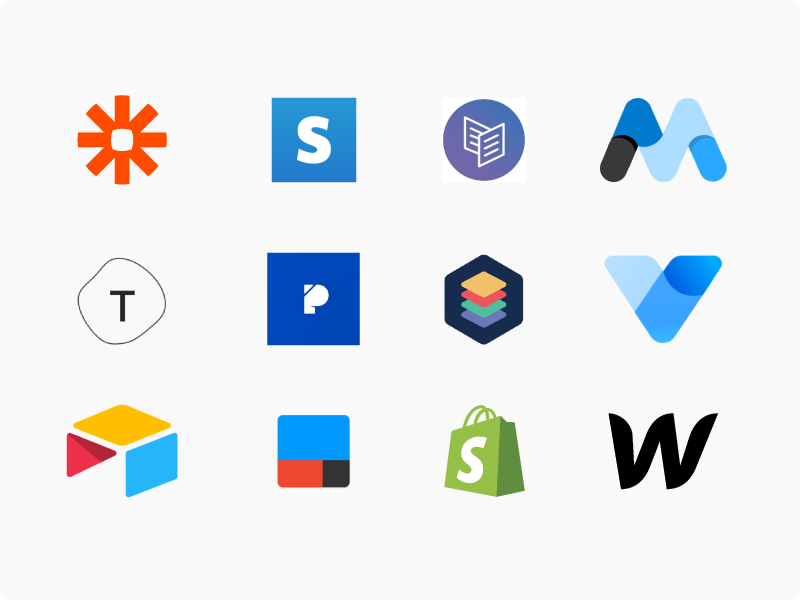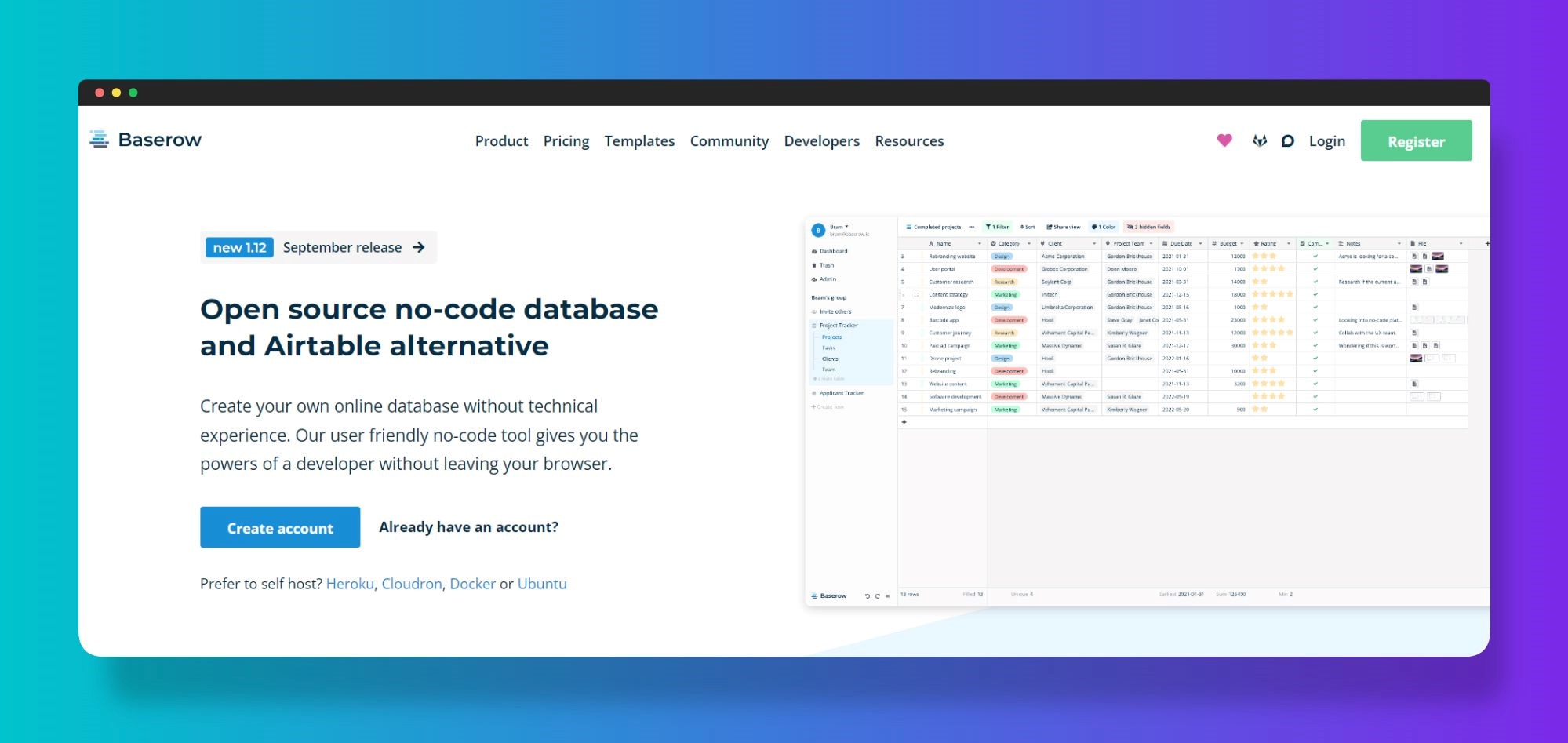Easy Open System Data Source Development Making Use Of No-Code Innovation
Easy Open System Data Source Development Making Use Of No-Code Innovation
Blog Article
Checking Out the Advantages of Scalable Data Sources That Require No Coding Abilities for Reliable Data Monitoring Solutions
The emergence of scalable data sources that eliminate the necessity for coding skills presents a transformative chance for companies looking for effective information administration options. As we take into consideration the ramifications of such innovations, it ends up being essential to take a look at how they can reshape the landscape of information administration and drive sustainable growth in a competitive environment.
Enhanced Access for Individuals
Improved availability for individuals is a critical element of scalable data sources, guaranteeing that information administration systems are user-friendly and easy to use. In an age where data-driven choices are critical, accessibility allows a broader array of users, including those without extensive technical competence, to involve with data source systems efficiently. This democratization of data accessibility assists in improved collaboration across divisions, encouraging employees to make and remove insights notified choices.
Straightforward user interfaces, such as drag-and-drop features and visual data representation, simplify intricate information interactions. These enhancements lower the learning curve associated with traditional database management, allowing users to focus on leveraging information as opposed to coming to grips with technological intricacies. Scalable data sources frequently integrate personalized control panels and real-time analytics, giving individuals with instant understandings tailored to their details requirements.

Cost-Effectiveness and Source Cost Savings
Effective information monitoring not only hinges on ease of access yet likewise on cost-effectiveness and resource savings. Scalable data sources designed for users with no coding abilities considerably decrease monetary worries normally related to conventional database administration systems. By eliminating the requirement for specialized programs experience, organizations can designate their sources more efficiently, concentrating funds on core service activities instead than extensive training or working with skilled personnel.
Moreover, these data sources commonly utilize cloud-based remedies, which additionally reduce prices connected to equipment and maintenance. Organizations can scale their database services according to their needs, staying clear of the expenses incurred from over-provisioning sources. This versatility indicates businesses can adapt to transforming demands without sustaining unneeded costs, bring about significant lasting cost savings.
Additionally, easy to use interfaces streamline information entrance and monitoring procedures, minimizing the time invested in management jobs. This effectiveness equates into labor price savings, permitting groups to concentrate on critical efforts as opposed to regular maintenance. In general, adopting scalable data sources that call for no coding skills fosters a much more cost-effective technique to data monitoring, allowing organizations to optimize their sources while preserving high degrees of functional efficiency.
Improved Collaboration Across Teams

Moreover, scalable data sources promote smooth communication amongst employee. With straightforward user interfaces that call for no coding abilities, staff members can conveniently develop, change, and share reports or control panels tailored to their certain requirements. This democratization of information encourages non-technical customers to add understandings, enhancing the joint setting.
Additionally, these data sources support simultaneous accessibility, allowing multiple customers to work with the same dataset all at once. This function boosts productivity, as groups can engage in joint information analysis without the threat of version control problems. The capacity to leave comments or notes straight within the data source additionally promotes dialogue and clarifies information analyses.
Streamlined Data Monitoring Processes
In today's data-driven atmosphere, companies acknowledge the necessity of streamlined information management refines to make the most of efficiency and accuracy. By leveraging scalable data sources that need no coding abilities, organizations can simplify their data handling and lower the complexities commonly connected with conventional database systems. This accessibility encourages non-technical individuals to engage directly with information, helping with quicker decision-making and reducing dependence on specialized IT workers.
Structured data administration procedures enhance operations by automating routine jobs such as information access, recognition, and coverage. Automated information combination makes certain that info from numerous sources is aggregated seamlessly, getting rid of silos and fostering a merged sight of crucial service metrics (no-code). Easy to use linked here user interfaces allow employees to manipulate information conveniently, enabling them to produce insights that drive calculated efforts without the requirement for comprehensive training.
This performance not only accelerates functional processes but likewise decreases the capacity for human error, ensuring that data continues to be accurate and trusted. Ultimately, structured information administration processes via scalable data sources bring about enhanced performance, permitting organizations to concentrate on core activities while making sure that their information monitoring techniques are effective and efficient.
Scalability for Growing Organizations

For increasing enterprises, the capability to scale up or down is important. A scalable data source can handle an influx of data generated from brand-new consumers, items, or services, making certain that company procedures continue to be undisturbed. These data sources give the ability to take care of peak tons successfully, which is vital during periods of fast i loved this development or seasonal spikes.
In addition, numerous scalable database options are designed with straightforward interfaces that need no coding skills, empowering non-technical staff to manage data efficiently (no-code). This democratization of information management enables companies to designate resources purposefully and decrease reliance on specialized IT personnel
Eventually, embracing a scalable database not just enhances operational effectiveness however also fosters a setting where organizations can progress and innovate without the restraints of typical database systems. This flexibility positions companies for long-term success in today's competitive landscape.
Conclusion
In verdict, scalable data sources that need no coding skills supply considerable benefits for efficient data monitoring. By streamlining data management processes and using scalability for expanding organizations, such remedies enable companies to adjust to transforming needs successfully.
Improved accessibility for customers is a crucial facet of scalable data sources, ensuring that data management systems are user-friendly and instinctive.User-friendly user interfaces, such as visual data and drag-and-drop features depiction, streamline complicated information communications. In general, embracing scalable databases that call for no coding skills fosters a much more cost-effective approach to information administration, allowing organizations to maximize their resources while keeping high levels of functional efficiency.
By leveraging scalable data sources that need no coding skills, organizations can streamline their information handling and lower the complexities normally linked with typical database systems - no-code.Structured information administration processes enhance workflow by automating routine tasks such as data entrance, validation, and reporting
Report this page